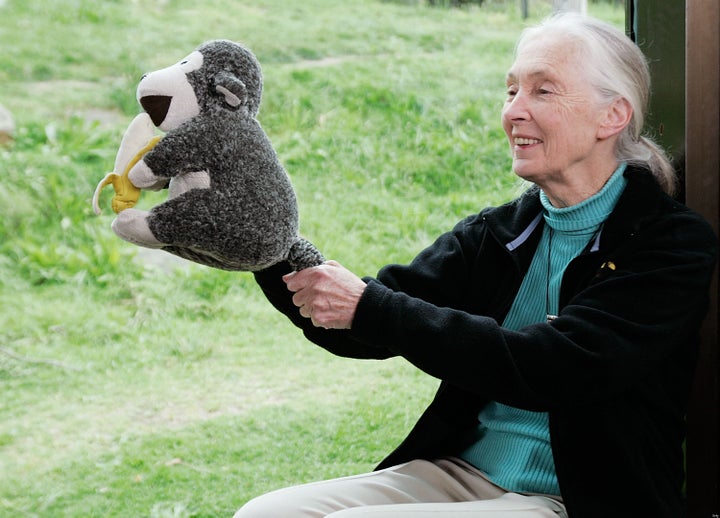
On September 24th, Dr. Jane Goodall bestowed the 2011 Global Leadership Awards, named in her honor, to those that have most impacted the field of conservation science including The Walt Disney Company, musician Dave Matthews, U.S. Rep. George Miller (CA-7) and Jack Dangermond.
For those active in the field of conservation science, many of the awardees might be household names, with the possible exception of Dangermond, who tends to keep a low profile. But Dangermond's quiet background belies his impact on the environment. In 2009, he entered the Forbes list of the 400 richest Americans. But wealth didn't earn him this award, instead he earned it from decades of involvement in preserving and protecting the environment using technology he developed at Esri, a company he founded with his wife Laura of 40 years. The son of immigrants, Dangermond's passion for environmental stewardship started when he was 16 years old in his family's landscaping business.
Dangermond and Esri's contribution to Jane Goodall's work is in the field of Geographic Information System ( GIS ) technology. While the technology has existed commercially for the last 30 years, only in the last few years has a new expression of GIS called geodesign really made an impact, including on the Greater Gombe Ecosystem in Tanzania, which caught the attention of Goodall. Dr. Lilian Pintea, who works with Goodall as a vice president of conservation science noted that, "we were able to design a landscape plan around Gombe National Park that better balances the needs of chimpanzees and people."
The Esri Website describes geodesign as a "framework and supporting technology for professionals to leverage geographic information, resulting in designs that more closely follow natural systems." Essentially, geodesign allows for scientific modeling to create predictive scenarios on how resource usage will impact the environment. By allowing for design in geographic space, it can help predict water usage, animal migratory patterns, impact on Wetlands, soil and coastal erosion and more.
Another example of Esri's GeoDesign in action is the East Central Florida 2060 plan. Here, urban planners were able to use GeoDesign to save 28 square miles of habitat and save $110 billion in unnecessary infrastructure costs.
But geodesign is more than just a tool for protecting the environment. It also can be an instrument of peace. In 1995, the former Yugoslavia broke apart along ethnic lines resulting in a wave of ethnic cleansing. The Dayton Peace Accords, aided by Esri's GeoDesign, were instrumental in resolving the conflict by identifying proper boundaries of Serbian and Muslim territories. "It was the first successful use of deployable digital technology in diplomatic negotiations," said Richard Johnson, a consultant to the National Geospatial-Intelligence Agency.
Given the impact of GIS technology on humankind, and Esri's important role in promoting its use, could an even bigger validation for Dangermond's work be that far off like a Nobel Prize? This remains to be seen, but in announcing a project partnership with Goodall this past August, Dangermond described his and Goodall's mutual "deep belief in the interconnectedness of all things, which obligates humankind to protect and conserve the environment." Technology and especially, social media, continues to make the world a smaller place but important pioneers in the field of GIS technology, like Dangermond, may in fact make the world a more sustainable place to live.